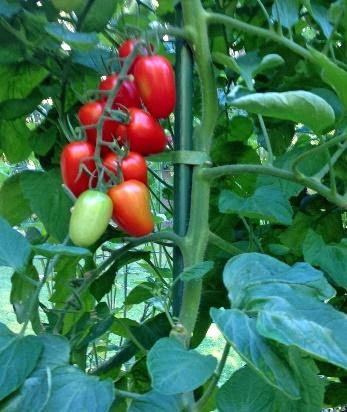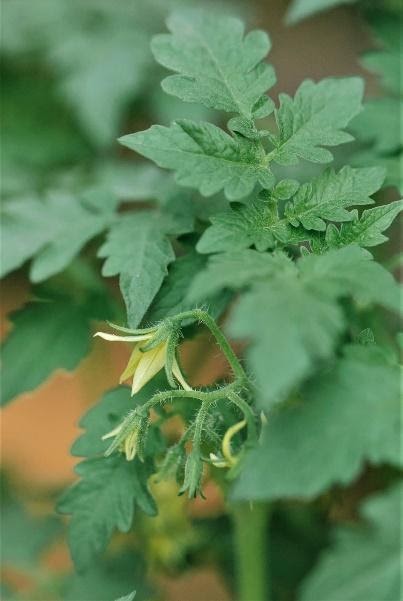
Summer is right around the corner. Without a doubt, everyone wants to grow tomatoes. They are a delicious addition to any meal.
Tomatoes are easy to grow, even if you neglect them a bit. They are originally from the Andes Mountains in South America, where they have hundreds of varieties and can even be considered a weed. They are part of the nightshade family, as are peppers and eggplants.
A very important reason to grow them is they are on the list of the Environmental Working Group. This group compiles a list of fruits and vegetables with the highest levels of pesticide residue. Cherry tomatoes are on the top dirty dozen list. Therefore, either you should grow your own or buy organic.
They are easy to grow and, even if neglected, you will still get a harvest, though it may not be the largest harvest crop. But imagine if a little care is given? Well, then you’ll get a bumper crop and delicious-tasting tomatoes.
Growing Requirements

They are a warm season crop that can’t be put outside until the soil has warmed up to at least 55° and the night temperatures don’t fall lower than 45°F; if the temperatures fall below this, they should be protected with cloths, sheets or garden blankets. Otherwise, they can easily get shriveled up and frost burned. Many times, I see the transplants being sold early in the season at nurseries; people quickly snatch them up on a nice warm day, forgetting that at night it could easily drop to high 30°F.
Tomatoes need lots of sun with a minimum of eight hours. They require well-drained soil, ideally with lots of organic matter. They will not tolerate wet feet, as the plant will rot. I have observed that, the richer the soil in organic matter, the larger production they yield and the tastier they are. The highest yields usually come from loam and clay soil. If you have sandy soil receiving southern exposure, these will produce the earliest tomatoes in the season, as they will drain quickly, and the soil will warm up early.
Tomatoes are very tolerant of slightly acid soils and will do fine with a low pH of 5.5. Higher pH will facilitate more minerals and nutrients to be readily available for absorption by the plant, so it is best to keep the pH at 6.5. Tomatoes also do well on slopes, provided they get consistent moisture; otherwise, they will develop blossom end rot.
Types of Tomatoes
Before you plant, it’s important to decide what type of tomato you like.
They come in various sizes, shapes and colors.

Do you like the large tomatoes, called beefsteak, which tend to be more watery, less meaty and grow round or oblong and are larger? (It’s clear a meat-eating person named them this way). I will call them large juicy tomatoes from now on. Upon slicing them, they can easily spread across your sandwich. These tend to weigh around a pound or more. The larger the fruit gets, the more prone to cracks. These are the varieties that take the longest to ripen.
Do you prefer those that have more pulp, are pear-shaped, have very little seeds and are often used to make sauce? These are called plum tomatoes. Used a lot in sauces, they have less juice and are usually mid-summer producing.
There are also more recent varieties, called grape tomatoes, which are more flavorful than cherry tomatoes.
They come in yellow, pink, red, orange, and various other colors that are definitely worth trying. The advantage for home gardeners is that the many varieties out there can be tried, even if one per season. The best is to grow several varieties that ripen at different times from early to late season.
Or is your preference to use the small cherry tomatoes, with no fuss, and for which you can avoid all those pesticides?
Another factor that will influence your decision is the space available to you. The height of tomatoes can be from two feet to eight or more feet. It all depends on the particular type you grow and how long your growing season is.
Three basic kinds: Determinate, Intermediate and Indeterminate Tomatoes

Determinates are those that stop growing at a particular point. These do not need pruning, they usually are no taller than three feet and produce a smaller yield but can be sufficient for small spaces and containers, or varieties that are specially made for sauces. Once they stop growing, they will begin to flower and all the fruit comes in at once. These are ideal for those who want to can tomatoes and don’t want to have the season stretched out over a long period of time.
If you plant the small varieties in containers, just be aware they can dry out quickly. Therefore, regular watering is a must.
Intermediate and indeterminate will grow from four to eight or more feet; they need pruning and can be staked or left to grow on the ground.
Staking versus Non-Staking
If staked and pruned, the fruit will be less susceptible to diseases; sometimes they say the yield may be slightly reduced but the fruit will be larger. My experience is that the staking or cages may reduce the yield some, but not the pruning.
The staking or use of cages and pruning may delay the fruiting stage by a week or so.
When staked or caged, they are more susceptible to blossom end rot and sunscald.
If you allow them to spread on the ground, then you run into disease problems, as the fruit will develop against the soil and is thus more likely to get disease. Therefore, straw mulch is essential to help prevent this problem. Also, animals like slugs can easily reach the fruit on the ground.
They are also more susceptible to other diseases, as air circulation is minimal and funguses can easily develop.
It is almost impossible to prune them on the ground and your overall yields will be less, as more energy will go into the actual plant and leaf production versus fruit production. It will be hard to see or find fruit if the plant is left to spread on the ground.
If allowed to grow, they will continue to do so until frost hits them or the plant gets diseased and dies. Once they start to produce, you will see the various fruits at different stages of development, from flowering to having fully ripe fruit all in the same plant.
Bloom Length

Another decision that has to be made is the length of time to harvest, which is dependent on bloom time. There are early bloomers, – from 40 to 60 days, mid-summer bloomers, – from 60 to 80 days and late summer bloomers, – from 80 days on. These correspond to the dates to harvest that the packages mention. The dates to harvest will range from 50 days to 90 days. This is the necessary time that the temperature must be warm above 45°F but ideally in the 60’s or warmer. The warmer the better, as the fruit will ripen faster on the vine and taste better.
To learn more about growing vegetables sign up for Amritaculture 101 a comprehensive course on growing food with Nature on the Amrita Virtual Academy website.
Photo Credits:
First photo: Copyright © 2021 Marleny Franco – All Rights Reserved
Second: Ponyo Sakana
Third: Copyright © 2021 Marleny Franco – All Rights Reserved
Fourth: Copyright © 2021 Marleny Franco – All Rights Reserved
Fifth: Copyright © 2021 Marleny Franco – All Rights Reserved
Sixth: Gary Barnes
